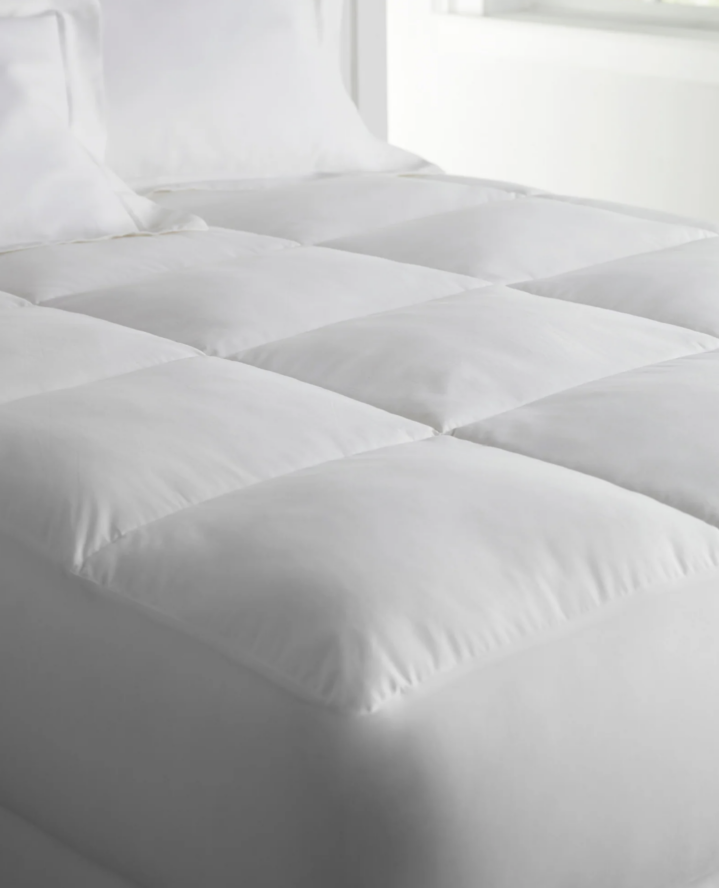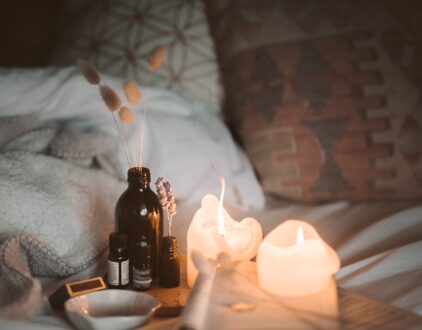When was the last time you cleaned your mattress? If you’re like most people, this question doesn’t require much thought because the truth is, you’ve probably never cleaned it. There could be many reasons you’ve never considered cleaning a mattress. Maybe you thought using a mattress protector meant it was unnecessary. Maybe you’re conscientious enough to wash your bed linens regularly and believed clean bedding protects you from any dirt on a mattress. If you’re like 40 percent of survey respondents in a recent study, you might not have known a mattress needed cleaning. Or maybe you’re like the 22 percent of those surveyed who knew they needed to clean a mattress but never made an effort. Maybe you thought you needed a professional to clean a mattress. Whatever the reason was in the past, keep reading to learn why you need to clean a mattress and how to clean it yourself.
Why Clean A Mattress?
Everyone knows by now that experts recommend sleeping 7-9 hours each night. By that math, the average person spends one-third of their lifetime in bed. Considering that the lifespan of a mattress is seven years, that same person spends 20,000 hours sleeping on the same mattress. In those seven years, the average person will have released nearly 150 gallons of sweat every year while sleeping. Put simply, that mattress is a warm, moist environment that bacteria can thrive in. Lab testing found that swabs from a 7-year-old mattress had more than 16 million units of bacteria per square inch. Even if a mattress has no visible staining, germs are lurking beneath the surface. There could be yeast, mold, bacteria (including E. coli and Staphylococcus), pet dander, dust mites, bed bugs, and even feces tracked into homes on the bottom of shoes present on an older mattress.
Experts also advise cleaning a new mattress before use. Mattresses are typically treated with chemicals that can release harmful odors. Mattresses were likely stored in filthy warehouses before being wrapped in packaging. These warehouses can contain many health hazards, including dust and cockroaches.
Supplies Needed
We wish it was a simple as doing a load of laundry, but mattresses cannot simply be thrown in the washing machine. It’s best to avoid getting liquid on your mattress altogether while cleaning it. Harsh cleaners or Chlorine-based products should not be used as they can damage the materials inside the mattress. There are several good choices for cleaning products, and which to use can vary according to personal preference.
The following supplies are needed to clean a mattress:
- Vacuum cleaner
- Cleaning cloth or scrubbing brush
- Stain remover options: dish soap, laundry detergent, enzyme cleaners, hydrogen peroxide, carpet cleaner
- Odor remover: Baking Soda
- Cold water for rinsing
Where To Clean
UV sunlight is an excellent option for eliminating germs and bacteria on a mattress. Cleaning a mattress outdoors is the most effective way to disinfect it. The longer it can be outside, the better. If taking the mattress outdoors is not an option, open your windows and curtains and make sure the mattress receives direct sunlight.
When To Clean A Mattress
Mattresses should be replaced every seven years or if there is sagging, indentations, loose springs, or other apparent damage. Experts recommended that mattresses be cleaned every six months or at least annually. Mattresses should be flipped and rotated every three months or according to the manufacturer’s instructions. A mattress protector can protect your mattress from stains, body oils, sweat, skin flakes, etc. A waterproof mattress protector can protect against liquid spills or other mishaps, which can also extend the life of the mattress. Feel free to clean a new mattress.
Cleaning A Mattress
- The first step in cleaning a mattress is to strip the bed and wash all the linens, including the mattress protector. Linens should be washed according to the manufacturer’s recommendation, but hot water is most effective. Additionally, wash linens separately. The more space available in the washing machine, the less likely linens will be tangled and balled up, which can trap areas with dirt and stains.
- Vacuum the mattress using the upholstery attachment. Go over the entire mattress surface slowly and carefully.
- Remove stains with a brush or cloth using any of the previously mentioned stain removers. Use very little water and spot clean gently by blotting.
- Remove odors by sprinkling baking soda over the mattress. Let stand for 30 minutes or more. Twenty-four hours is ideal. The longer baking soda sits, the more effectively it removes germs and odors.
- Vacuum the mattress again.
- Flip the mattress over and repeat the process.
- After completely drying, put on the freshly cleaned mattress protector.
- Next, put fresh pillows and linens on the bed; use a fitted sheet for an extra layer of protection from dust.
Gone are the days of sleeping on futons, finding mattresses on curbs, or buying used ones from some stranger’s guest room on Craigslist. Buying mattresses new, cleaning them annually, and replacing them every seven years might well be the final phase of adulting. Good mattress hygiene is an essential component of a good night’s rest. Now that you know everything there is to know about cleaning and maintaining your mattress, drop the excuses and put forth the effort. It’s not as complicated as you thought.
popular posts
- 1It’s Black Business Month, So Let’s Go Shopping and #BuyBlack!
- 2These Home Decor Items Will Instantly Make Your Space Look Outdated
- 3Black-Owned Home Decor Stores To Support Across the United States
- 4A Look Inside Elon Musk's Tiny $50,000 House
- 57 Black and Multicultural Designers To Follow For Design Inspo
Bedroom
Spaces
Whether it’s luxury or ease, every area of your home should be as fabulous and unique as you.

The 5 Best Nightstands for Every Kind of Organizer
by Melody Beuzelin | May 4, 2023
FOLLOW ALONG ON INSTAGRAM
#homeandtexture
Find us on social for more home inspiration where culture, personal style, and sophisticated shopping intersect to help you create a home where you love to live.







